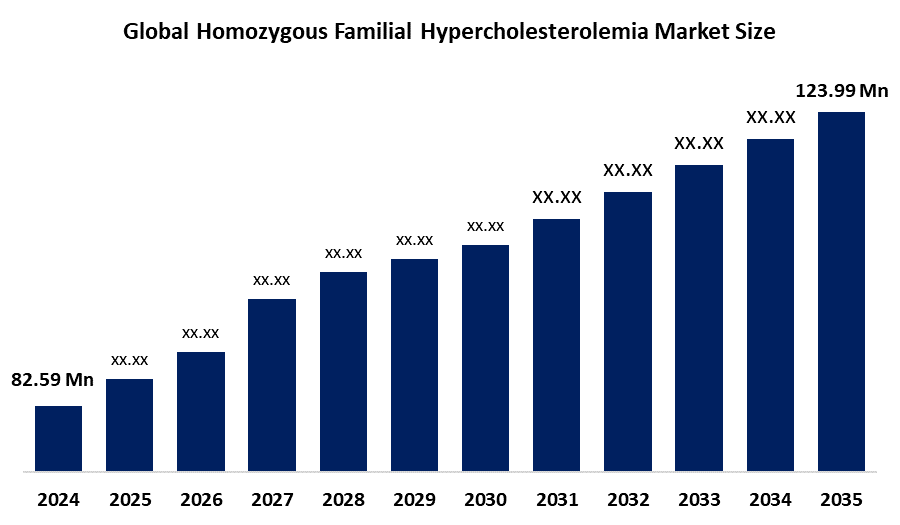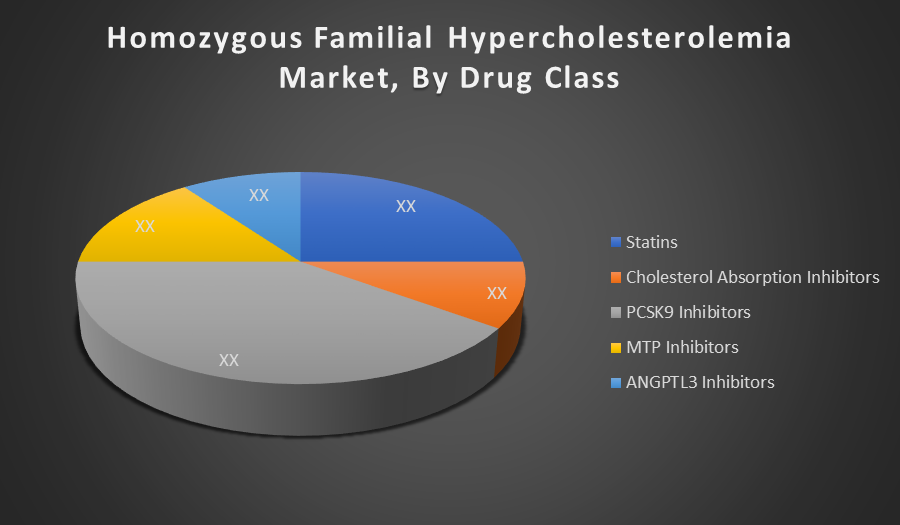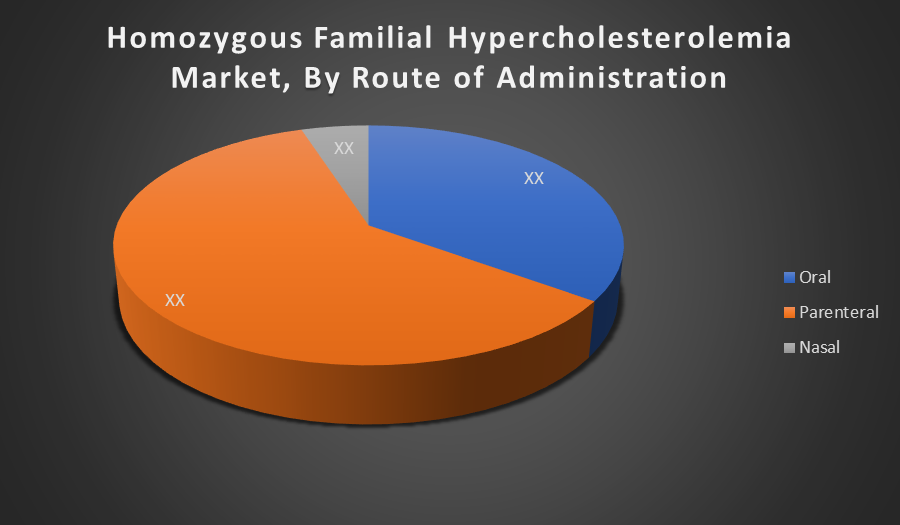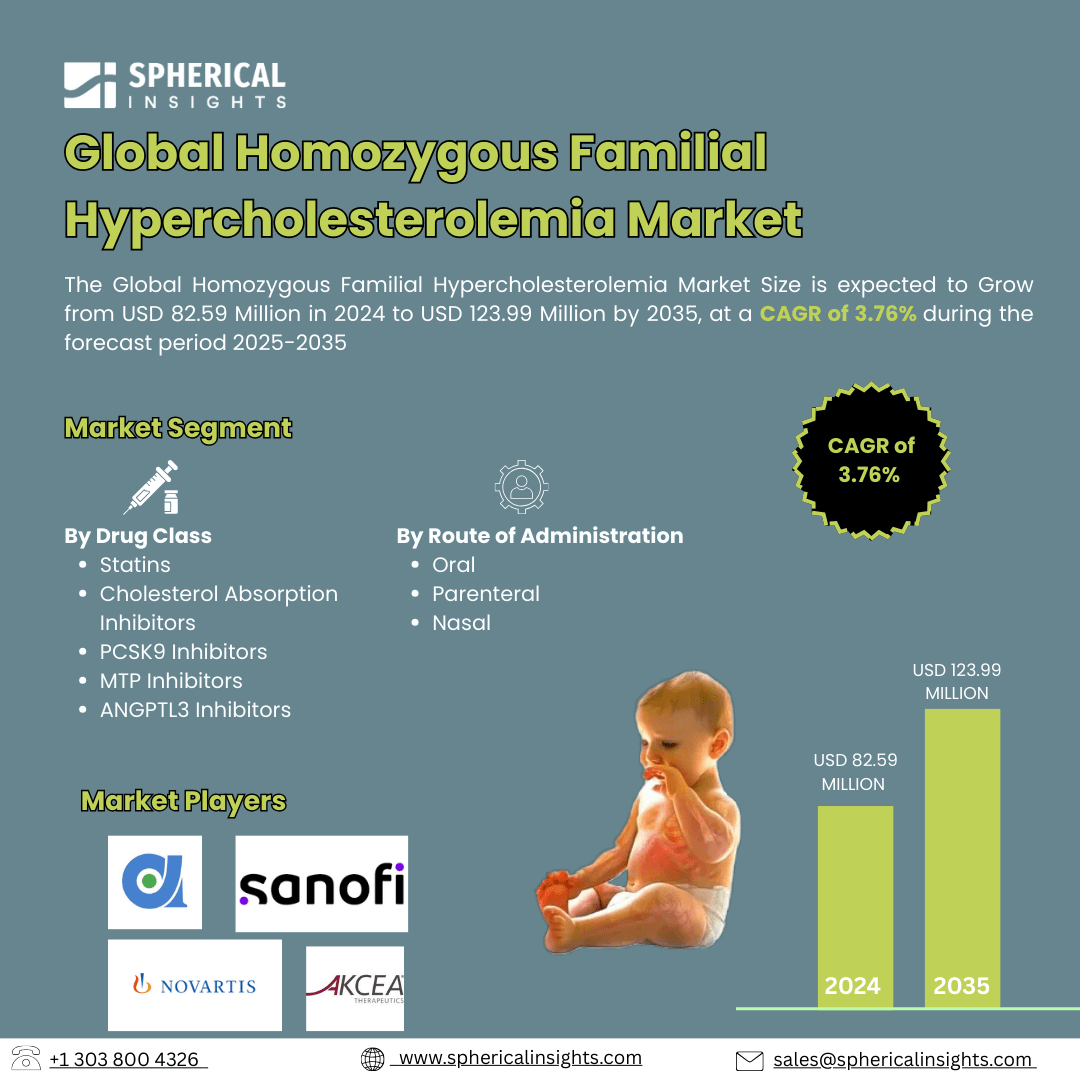- As per Spherical Insights & Consulting, The Global Homozygous Familial Hypercholesterolemia Market Size is expected to Grow from USD 82.59 Million in 2024 to USD 123.99 Million by 2035, at a CAGR of 3.76% during the forecast period 2025-2035, owing to the launch of new therapies in the market and the rise in the number of cases.
- The leading Homozygous Familial Hypercholesterolemia Market Companies such as Arrowhead Pharmaceuticals, Sanofi, Akcea Therapeutics, Novartis, Amgen, Pfizer, AstraZeneca, Ionis Pharmaceuticals, Alnylam Pharmaceuticals, Merck & Co., Regeneron, Esperion Therapeutics, Silence Therapeutics, Daiichi Sankyo, Eli Lilly, and Others.

Homozygous Familial Hypercholesterolemia Treatment Market: Understanding and Treatment Algorithm:
Homozygous Familial Hypercholesterolemia (HoFH) is a rare genetic disorder characterized by extremely high levels of low-density lipoprotein cholesterol (LDL-C) from birth. It results from mutations affecting LDL receptor function, leading to early-onset cardiovascular disease and increased risk of heart attacks and strokes if untreated.
Homozygous Familial Hypercholesterolemia Diagnosis:
Diagnosis of HoFH involves a combination of clinical evaluation, family history, and lipid profiling showing very high LDL-C levels. Genetic testing confirms mutations in LDL receptor or related genes. Additional diagnostic tools include physical signs like tendon xanthomas and imaging for cardiovascular complications.
Homozygous Familial Hypercholesterolemia Treatment:
Treatment focuses on aggressive LDL-C reduction through high-intensity statins, PCSK9 inhibitors, and newer agents like ANGPTL3 inhibitors. Lipoprotein apheresis and lifestyle modifications complement drug therapy. Early intervention is critical to prevent cardiovascular events and improve long-term outcomes in patients with HoFH.
Homozygous Familial Hypercholesterolemia Epidemiology:
The disease epidemiology covered in the report provides historical as well as forecasted epidemiology segmented by Total Diagnosed Incident Population of Homozygous Familial Hypercholesterolemia, Gender specific Diagnosed Incidence of Homozygous Familial Hypercholesterolemia, Type specific Diagnosed Incidence of Homozygous Familial Hypercholesterolemia, Age specific Diagnosed Incidence of Homozygous Familial Hypercholesterolemia, Diagnosed Incident Population based on Primary Site of Homozygous Familial Hypercholesterolemia, and Diagnosed Incident Population based on Histologic Classification of Homozygous Familial Hypercholesterolemia Tumour in the global market covering North America, Europe, Asia-Pacific, Latin America, the Middle East, and Africa from 2024 to 2035.
Principal Insights:
This section offers a global overview of Homozygous Familial Hypercholesterolemia epidemiology in major markets worldwide.
Country Wise Homozygous Familial Hypercholesterolemia Multiforme Epidemiology:
- The epidemiology segment provides Homozygous Familial Hypercholesterolemia prevalence data and findings across key regions worldwide, including North America, Europe (Germany, France, Italy, Spain, and the United Kingdom), Asia-Pacific (including Japan), Latin America, the Middle East, and Africa.
Homozygous Familial Hypercholesterolemia: Recent Developments:
- In January 2025, LIB Therapeutics announced the publication of its Phase 3 LIBerate-HoFH study in Lancet Diabetes & Endocrinology. The randomized crossover trial compared monthly lerodalcibep to evolocumab in genetically confirmed HoFH patients aged 10-58 across multiple regions. The report detailed comparable LDL-C reductions, supporting lerodalcibep’s efficacy and safety profile in this high-risk population.
Homozygous Familial Hypercholesterolemia Marketed Drugs:
• Evkeeza: Regeneron
Evkeeza (evinacumab) is a monoclonal antibody that inhibits ANGPTL3, significantly reducing LDL-C in HoFH patients. It is FDA-approved as an adjunct to other lipid-lowering therapies in individuals aged 5 years and older with HoFH. It offers a novel mechanism, independent of LDL receptor function, making it effective in genetically resistant cases.
• Repatha: Amgen
Repatha (evolocumab) is a PCSK9 inhibitor approved for the treatment of HoFH. It reduces LDL cholesterol levels by enhancing LDL receptor recycling. Repatha is used alongside statins and other lipid-lowering therapies and is effective in patients with partial LDL receptor function. It is approved for both adults and pediatric patients.
Homozygous Familial Hypercholesterolemia: Emerging Therapies:
- Lerodalcibep: It is a long-acting PCSK9 inhibitor in late-stage trials for Homozygous Familial Hypercholesterolemia. It is a fusion protein designed to provide monthly subcutaneous dosing with strong LDL-C reduction. Recent Phase 3 data showed efficacy comparable to evolocumab, positioning it as a potential next-generation therapy for patients unresponsive to conventional treatments.
- Zodasiran: It is an RNA interference (RNAi) therapy targeting ANGPTL3, currently in Phase 2 trials for HoFH. It aims to reduce LDL-C and other atherogenic lipoproteins by silencing the ANGPTL3 gene expression. Its infrequent dosing and efficacy in early data make it a promising option for high-risk lipid disorder populations.
Homozygous Familial Hypercholesterolemia Market Outlook:
- The Global Homozygous Familial Hypercholesterolemia (HoFH) Market includes therapies designed to manage severely elevated LDL cholesterol due to genetic mutations. It covers various drug classes, administration routes, and supportive care aimed at reducing cardiovascular risks in affected patients.
- Rising prevalence of HoFH, increased genetic screening, and growing awareness about cardiovascular complications drive market growth. Advances in targeted therapies like PCSK9 and ANGPTL3 inhibitors and improved diagnostic tools further boost treatment adoption globally.
- Expansion in emerging markets, development of novel RNA-based therapies, and potential for combination treatments offer significant growth opportunities. Increasing investments in research for more effective and safer drugs could transform patient outcomes and broaden the therapeutic landscape.
- Governments worldwide are promoting rare disease awareness and funding genetic testing programs. Regulatory agencies have streamlined orphan drug approvals, facilitating faster access to innovative HoFH therapies and incentivizing pharmaceutical R&D in this niche market.
- High treatment costs and limited patient awareness hinder widespread therapy adoption.
- The market is projected to grow robustly due to technological advancements and increased adoption of novel, effective therapies improving patient prognosis.
Homozygous Familial Hypercholesterolemia Market Segmentation:
By Drug Class:
- Statins
- Cholesterol Absorption Inhibitors
- PCSK9 Inhibitors
- MTP Inhibitors
- ANGPTL3 Inhibitors

PCSK9 Inhibitors hold the largest market share due to their high efficacy in lowering LDL cholesterol in HoFH patients who respond poorly to traditional therapies like statins. Their targeted mechanism offers superior results, especially in patients with genetic resistance to standard treatments, making them the preferred choice for long-term management.
By Route of Administration:

Parenteral administration leads the market as most advanced therapies for HoFH, including PCSK9 and ANGPTL3 inhibitors, are delivered via injection. These biologics require precise dosing and faster systemic action, making injections the optimal route. Additionally, limited oral options for severe lipid disorders further elevate parenteral use in clinical practice.
Regional Segment Analysis of the Homozygous Familial Hypercholesterolemia Market:
North America holds the largest share in the HoFH market due to advanced diagnostic infrastructure, high awareness among healthcare providers, and the widespread availability of novel therapies such as PCSK9 and ANGPTL3 inhibitors. The presence of key pharmaceutical players and strong regulatory frameworks has also contributed to market maturity. Reimbursement policies and increased genetic screening have further supported early detection and effective management of HoFH in this region.
Asia-Pacific is the fastest-growing region in the HoFH market, driven by increasing healthcare expenditure, improving access to genetic testing, and rising awareness of rare lipid disorders. Expanding pharmaceutical investments and the gradual adoption of biologic therapies in countries like China and India are accelerating growth. Government initiatives promoting rare disease treatment and better health coverage are expected to boost diagnosis rates and demand for advanced therapeutic options.
Homozygous Familial Hypercholesterolemia Market Key Companies:
- Arrowhead Pharmaceuticals
- Sanofi
- Akcea Therapeutics
- Novartis
- Amgen
- Pfizer
- AstraZeneca Ionis Pharmaceuticals
- Alnylam Pharmaceuticals
- Merck & Co.
- Regeneron
- Esperion Therapeutics
- Silence Therapeutics
- Daiichi Sankyo
- Eli Lilly
- Others
Homozygous Familial Hypercholesterolemia Therapeutics Market Report Scope:
- The Homozygous Familial Hypercholesterolemia therapeutics market report provides a detailed overview, covering its causes, symptoms, disease progression, and existing treatment options.
- Detailed insights into Homozygous Familial Hypercholesterolemia’s epidemiology and therapeutic approaches are included.
- Additionally, a comprehensive review of existing and emerging Homozygous Familial Hypercholesterolemia therapies is provided, including an evaluation of new treatments expected to influence the current Homozygous Familial Hypercholesterolemia treatment market landscape.
- The report includes a detailed review of the Homozygous Familial Hypercholesterolemia therapeutics market, both historical and forecasted, highlighting the global drug reach.
- The Patient-Based Homozygous Familial Hypercholesterolemia Market Forecasting report offers valuable insights into trends shaping the global Homozygous Familial Hypercholesterolemia market, helping to develop effective business strategies.
Homozygous Familial Hypercholesterolemia Treatment Market Report Insights:
- Forecasting Market Trends Based on Patient Data and Disease Rates
- Homozygous Familial Hypercholesterolemia Therapeutic Approaches in Homozygous Familial Hypercholesterolemia
- Review Of Drugs in Development for Homozygous Familial Hypercholesterolemia
- Market, Growth, and Trends in Homozygous Familial Hypercholesterolemia
- Market Opportunities in Homozygous Familial Hypercholesterolemia Treatment
- Effects Of Future Therapies on Homozygous Familial Hypercholesterolemia Treatment.
Homozygous Familial Hypercholesterolemia Treatment Market Report Key Strengths
- 15 Years Homozygous Familial Hypercholesterolemia Market Forecast
- Global Coverage
- Homozygous Familial Hypercholesterolemia Epidemiology Segmentation
- Key Cross Competition
Homozygous Familial Hypercholesterolemia Treatment Market Report Assessment
- Present Practices in the Homozygous Familial Hypercholesterolemia Treatment Market
- Review of Investigational Homozygous Familial Hypercholesterolemia Drugs
- Attractiveness of the Homozygous Familial Hypercholesterolemia Drug Market
- Homozygous Familial Hypercholesterolemia Market Drivers
- Homozygous Familial Hypercholesterolemia Market Barriers
- SWOT
- Attribute Analysis
Market Segment:
This study forecasts revenue at the global, regional, and country levels from 2020 to 2035. Spherical Insights has segmented the Homozygous Familial Hypercholesterolemia market based on the following segments:
Global Homozygous Familial Hypercholesterolemia Market, By Drug Class
- Statins
- Cholesterol Absorption Inhibitors
- PCSK9 Inhibitors
- MTP Inhibitors
- ANGPTL3 Inhibitors
Global Homozygous Familial Hypercholesterolemia Market, By Route of Administration
Global Homozygous Familial Hypercholesterolemia Market, By Regional Analysis
- North America
- Europe
- Germany
- UK
- France
- Italy
- Spain
- Russia
- Rest of Europe
- Asia Pacific
- China
- Japan
- India
- South Korea
- Australia
- Rest of Asia Pacific
- South America
- Brazil
- Argentina
- Rest of South America
- Middle East & Africa
- UAE
- Saudi Arabia
- Qatar
- South Africa
- Rest of the Middle East & Africa






